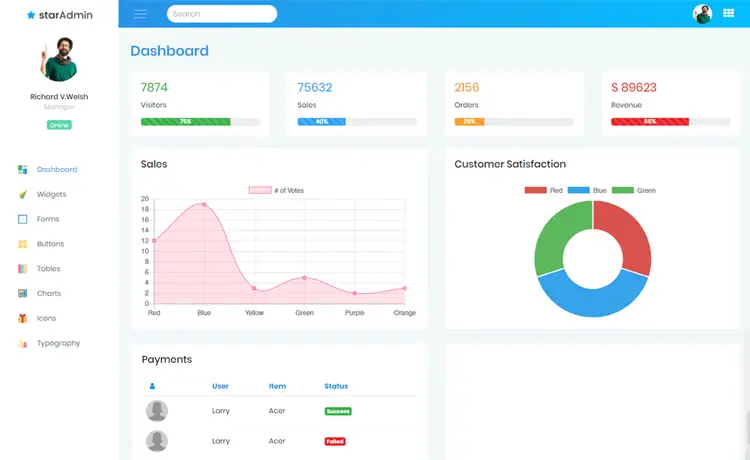How to use Scrutor in ASP.NET Core
By Tan Lee Published on Jan 04, 2025 548
Dependency injection (DI) promotes loose coupling, testability, and maintainability by allowing you to change implementations without altering the classes or interfaces that use them.
Without dependency injection, changes in dependent objects require modifying the object that uses them, making unit testing difficult. With DI, dependent objects are injected at runtime, avoiding the need for internal construction and simplifying testing.
Scrutor is not a DI container but a library that offers a fluent API for service registration based on conventions, using ASP.Net Core's built-in DI container. For more advanced DI features, third-party containers like AutoFac, Windsor, StructureMap, Ninject, and DryIoc can be used. Scrutor primarily extends ASP.Net Core's DI with assembly scanning and decoration capabilities.
Create a new ASP.Net Core project in Visual Studio and then install Scrutor from NuGet using the NuGet Package Manager or Console.
Scanning assemblies using Scrutor in ASP.NET Core
The Scrutor API extends the IServiceCollection interface with two methods: scan and decorate.
The scan method searches an assembly for types that match a service to be registered, while decorate is used to decorate an existing service instance.
In this post, the focus is on the scan method, which involves defining a selector, registration strategy, services, and their lifetimes. Scrutor scans assemblies to find types that match the convention and registers them with ASP.Net Core's DI container. Without Scrutor, you would manually register services like IService1, IService2, and IService3 with corresponding implementations.
services.AddScoped<IService1, Service1>(); services.AddScoped<IService2, Service2>(); services.AddScoped<IService3, Service3>();
Registering services using Scrutor in ASP.NET Core
The code snippet shows how to simplify service registration in the ConfigureServices method of the Startup class by using Scrutor's assembly scanning capabilities.
public void ConfigureServices(IServiceCollection services)
{
services.Scan(scan =>
scan.FromCallingAssembly()
.AddClasses()
.AsMatchingInterface());
services.AddMvc().SetCompatibilityVersion(CompatibilityVersion.Version_2_1);
}You can also explicitly specify the types in the scan method.
For instance, if you have two services, ServiceA and ServiceB, you can register them as transient services like this:
services.AddTransient<ServiceA>(); services.AddTransient<ServiceB>();
Alternatively, you can explicitly list the types in the scan method and register them with a transient lifetime:
services.Scan(scan => scan
.AddTypes<ServiceA, ServiceB>()
.AsSelf()
.WithTransientLifetime());Another variation allows you to pass a type to Scrutor, which will then find all classes in the assembly containing that type.
For example:
services.Scan(scan => scan
.FromAssemblyOf<IDataService>()
.AddClasses()
.AsSelf()
.WithTransientLifetime());Scrutor is an open-source framework that enhances the default Microsoft.Extensions.DependencyInjection DI container in ASP.Net Core by adding scanning capabilities.
- Implement security headers for an ASP.NET Core
- How to add security headers to an ASP.NET Core Application
- How to Initialize TagHelpers in ASP.NET Core with Shared Data
- Boost Your ASP.NET Core Website Performance with .NET Profiler
- The name 'Session' does not exist in the current context
- Implementing Two-Factor Authentication with Google Authenticator in ASP.NET Core
- How to securely reverse-proxy ASP.NET Core
- How to Retrieve Client IP in ASP.NET Core Behind a Reverse Proxy





